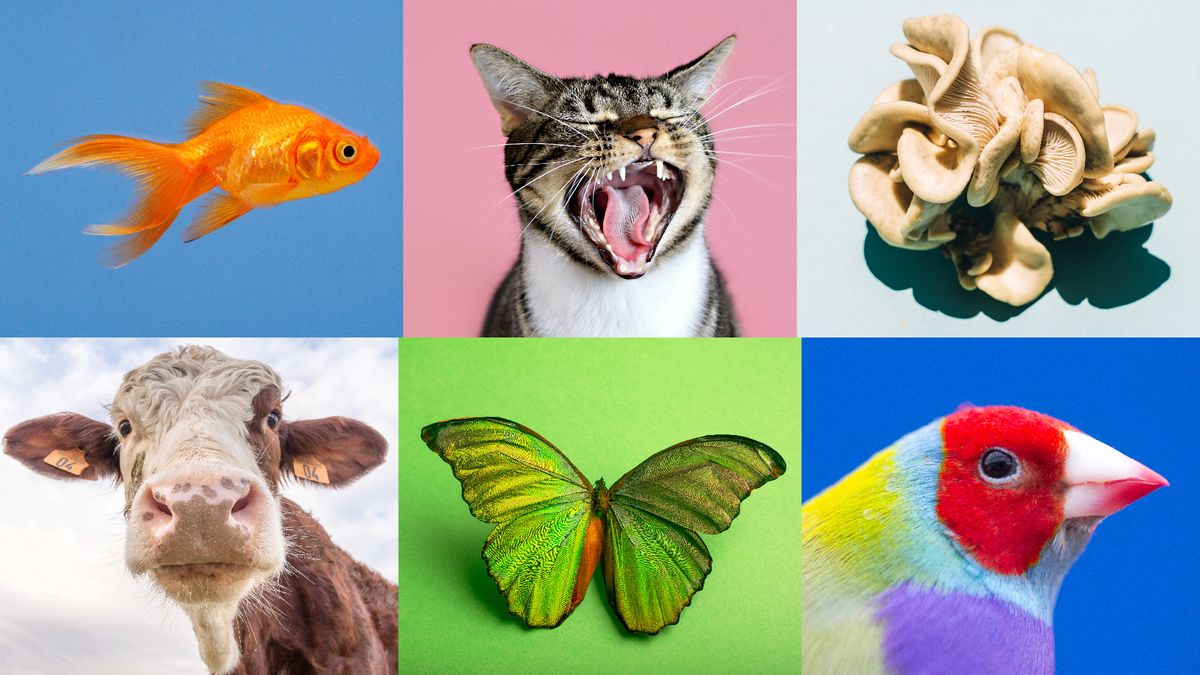Many people could differentiate a sparrow from a pigeon, hawk or duck. But to a biologist, the term “sparrow” wouldn’t be descriptive enough — a biologist would want to know what species of sparrow they were looking at. But what, exactly, is a species, and how is it defined?
In biology, a species is the fundamental unit of taxonomy, the scientific system of categorizing life on Earth. And without the concept of a species, plenty of scientific endeavors, from wildlife conservation to public health, would be much more difficult.
Related: What defines a species? Inside the fierce debate that’s rocking biology to its core
Officially, a “species” is the bottom of the taxonomic ranking system that starts with domain and works its way down through kingdom, phylum, class, order, family and, finally, genus and species. These bottom two categories give each organism its scientific name, such as Passer domesticus, the house sparrow, which is the species “domesticus” in the genus Passer.
This system was formalized in the 1700s by Swedish biologist Carl Linnaeus. And for a long time, the divisions between species were often based on obvious trait differences — one bird species might have had a blue head, while another species had a red head. But in the mid-20th century, biologist Ernst Mayr proposed a more rigorous definition, known as the biological species concept.
“He promoted this idea that species are reproductively isolated units, so populations that interbreed together,” said Sushma Reddy, an evolutionary biologist at the University of Minnesota. Essentially, house sparrows mate only with other house sparrows, and Eurasian tree sparrows (Passer montanus) mate only with other Eurasian tree sparrows, thus keeping these populations separate.
But there are some problems with that definition. Many species can and do breed with other species — including house sparrows and Eurasian tree sparrows. In addition, some species (including many microbes) reproduce asexually, meaning one individual replicates itself. Therefore, grouping these tiny creatures into “reproductively isolated units” makes little sense.
So, in the 1980s, Joel Cracraft, an ornithologist who’s now at the American Museum of Natural History, introduced the “phylogenetic species concept,” which says a species is a group of organisms that share a set of traits and descend from a common ancestor. Species were still the unique groups at the bottom of the taxonomic ranking system, but this new definition allowed for a little more wiggle room.
“It’s not just this idea that we’re concerned about reproduction being the thing that defines species,” Reddy told Live Science, “but just sets of characters that would tell us that these have an evolutionary identity that’s different from other lineages.”
Today, genetic studies and DNA sequencing add even more nuance to this conversation. And the species isn’t truly the lowest rung in the classification system. While house sparrows and Eurasian tree sparrows are different enough to be unique species, for instance, both species are divided into multiple “subspecies,” or unique subgroups that may live in different regions and/or have slightly different traits.
The lines between one species and another, as well as between species and subspecies, are often drawn on a case-by-case basis. Sometimes, that process is done by larger scientific organizations, like the American Ornithological Society; other times, it’s done by individual scientists. To date, scientists have described around 1 million to 2 million species.
But estimates of how many species, including undescribed ones, exist on Earth can vary wildly. While some scientists have proposed that there are likely around 9 million species in total, others have suggested that the number is closer to 100 million, or maybe around a billion — or even a trillion.
These distinctions may seem arbitrary, but classifying species can be vital to conservation. Protecting the saltmarsh sparrow (Ammospiza caudacuta), for example — whose population has been declining with the destruction of saltmarsh habitat in the eastern U.S. — will look very different from protecting house sparrows, which are abundant. But perhaps most important, classifying individual species simply helps us understand and appreciate the diversity of life on Earth. By grouping organisms that look and act differently into distinct categories, we can study those traits, Reddy said.













/https://tf-cmsv2-smithsonianmag-media.s3.amazonaws.com/filer_public/34/31/3431771d-41e2-4f97-aed2-c5f1df5295da/gettyimages-1441066266_web.jpg)



![Ep266: [Lean Series] How to Plan a Responsible Fat Loss Phase Ep266: [Lean Series] How to Plan a Responsible Fat Loss Phase](https://carrotsncake.com/wp-content/uploads/2024/06/Carrots-N-Cake-VIP-Nutrition-Coaching-768x1040.jpeg)
.jpg)

Discussion about this post